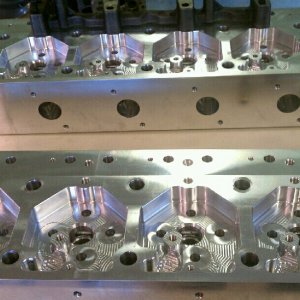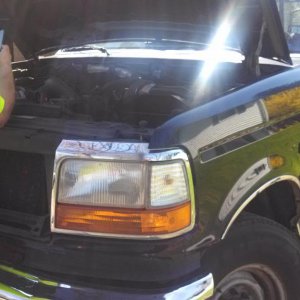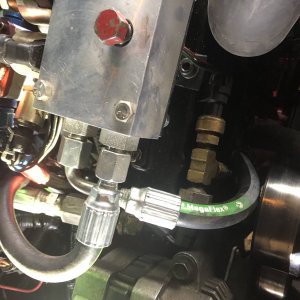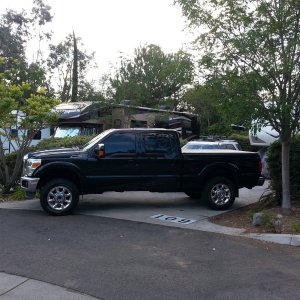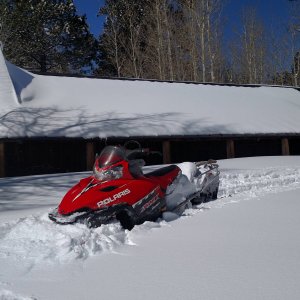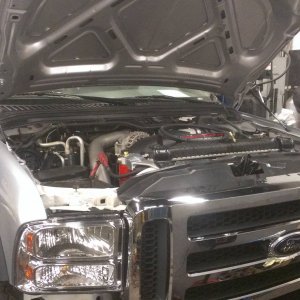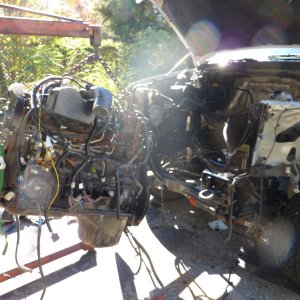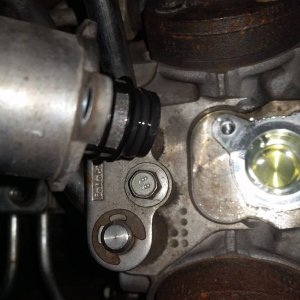Without getting tooooo explicit.
From a purely mechanical standpoint, what happens when the injector fires?
In this order:
Armature plate lifts (simultaneously lifting the poppet valve)
HPOil pressure begins, begins, begins,
begins,
begins,
begins,
begins to transfer its pressure through the poppet valve.
now...stop...freezeframe.
nothing internally has even begun to
MOVE inside the injector...there has been no FLOW through any oil or fuel side components OR potential restrictions.
WHY?
The nozzle, or more specifically, the spring holding the
nozzle needle SHUT (typically requiring @ 2750psi on stock injectors to begin to LIFT) is still closed...I mean we are talking tenths of ms here...but bear with me.
The nozzle needle will
not begin to lift until (use your MATH here, as there is no flow, no restrictions to change the dynamically
changing volumes, due to part movement, within the injector)..
on an hybrid, "5:1" injector, with a 2750 "pop" nozzle...there actually has to be at least 550psi (2750 divided by "5") of OIL pressure transferred through the poppet ..so the pressure begins to be transferred through the poppet ONTO the intensifier piston which will then transfer ITS' pressure "5:1" to the plunger...100, 200, 300psi, 400, 549psi(still...nothing has moved)
*crack* the nozzle needle now lifts exactly at 550psi HPOil psi (2750 fuel psi at the nozzle)
now sh!t starts moving...since fuel is FLOWING out of the nozzle.
the intensifier piston starts to stroke downward (simultaneously moving the plunger against the fuel)...creating MORE SPACE (more volume to be filled by HPOil) above the intensifier piston, so we have a pressure drop across the poppet valve...
On one side of the poppet valve...we have ALL THE OIL IN THE WORLD...oil rails FULL of "extreme ICP" :hehe:
on the OTHER side of the poppet valve...the side that is constantly/quickly increasing in volume (because the IP is "falling away") we have less pressure...this is not easily measured directly, but my previous post is 'proof'.
OK...so oil is trying, DYING to get through the poppet valve...trying to 'keep up' with the ever increasing space created by the void left behind as the IP moves down...more pressure drop....all the while, you have your "extreme ICP" just hanging the "F" out in your high dollar pumps, and within the oil rails in the heads.
starting to see what's happening?
now, put a BIG ASSSSSS nozzle on that injector...ya know...like the 200% EDM's that are available...hell, we'll make it "best case" scenario...and keep the VOP of that nozzle at factory levels...at 2750psi "pop".
now, all this happens again...now, with an even LARGER nozzle like we have now...all the internal parts are going to move STUUUUPPPPID fast...as that big ass nozzle offers no real restriction to flow...so we create an even LARGER pressure drop across the poppet...
(at the nozzle) injection pressure is horrible because the F'n oil can't "keep up" with the IP dropping faster than the oil can get
in...
NOW, let's make it a B-code!!!! 40% larger oil side to fill...same oil restriction at the same ol poppet valve...
now...
I hope anyone & everyone here involved in this thread can agree...HPOil is THE key to making good power with the HEUI Power Stroke injectors. Doesn't matter if you have 100cc's or 1000cc's...if you don't have "good ICP" the truck is a turd...smokey...inefficient...
now, what happened when you put that twin HPOP on your truck? Bam!
Instant throttle response...much more crisp, much cleaner burn...much more efficient.
I could get into all kinds of crap about 'instant' HPOil pump output...and how THAT can affect oil 'flow' through the poppet...but hopefully my video illustrates that a 300cc B-code injector needs to move (6 x 300mm^3) 1800mm^3's of oil THROUGH the poppet in UNDER 2ms....every single injection event...every single injector...

a hybrid only has to move (5 x 300), and an A-code (7 x 300)...see a pattern here?
Volume of oil per time is the key.
know wonder we have so many quitters ...very, very few people understand the F'n HEUI injector...and none are as committed to it as us. Period.
I'll stop now, and clarify if needed.
but...hybrids use LESS HPOil per volume of fuel delivered than ANY type of injector out there...and the OIL is the key to making power with HEUI's...
always has been.














